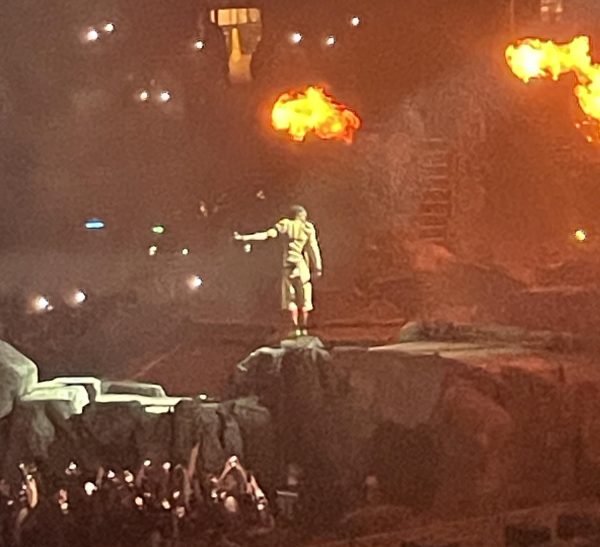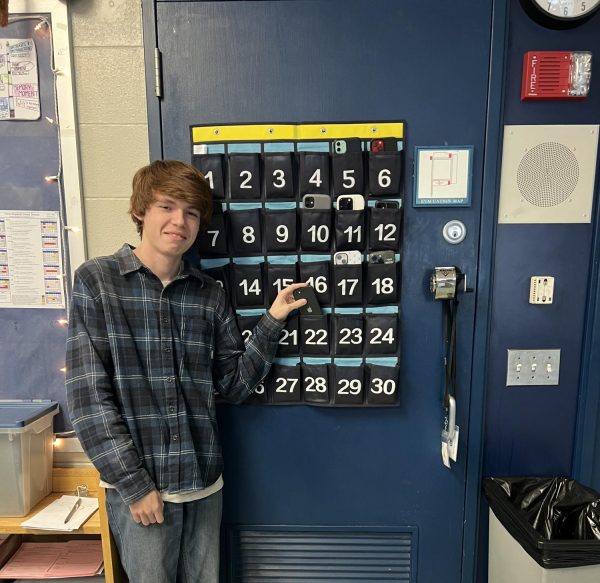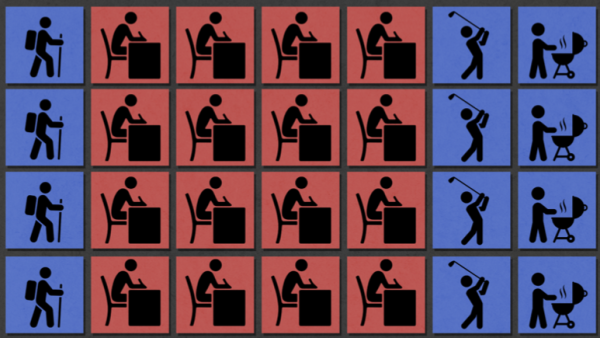The I.N.F Treaty is Dead
(From left to right) Tirth Patel, Justin Szymanski, and Kyle Brancaleone debate the Five Nights at Freddy’s premier.
November 9, 2018
Tirth Patel, a Triton senior, feels strongly about the tension between the two global superpowers, Russia and the United States. “I think there has been a lot of tension between the US and Russia, and because of that, backing out — pulling out of the treaty… it could prove to be hazardous for not only the two superpowers, but for other countries as well,” Patel said, after learning about the withdrawal of the Intermediate-Range Nuclear Forces treaty.
In 1987, Mikhail Gorbachev, a Russian politician, and former president Ronald Reagan met in Washington, D.C., to sign the negotiated Intermediate-Range Nuclear Forces Treaty. The treaty would, according to the U.S. Department of State, eliminate nuclear and conventional missiles, as well as their launchers, with ranges of 500–5,500 kilometers. This treaty would not require the elimination of nuclear weapons.
President Donald Trump, this week, announced that his administration had plans to leave the 30-year-old treaty. According to the New York Times’ article “U.S. to Tell Russia It Is Leaving Landmark I.N.F. Treaty”, by David E. Sanger, John Bolton, Trump’s National Security advisor, was quoted as saying that “Russia continues to produce and field prohibited cruise missiles and has ignored calls for transparency.”
Both the United States and Russia have claimed that the other country has broken the trust of the treaty. Russia claims that the U.S.’ use of UAVs – unmanned aerial vehicles -, alongside the U.S.’ bases in Poland and Romania, both of which are capable of launching tomahawk missiles, are violations of the Cold War-era treaty.
However, the Russians have blatantly violated the agreement. The Novator 9M729, a Russian warhead that was found to be first test-fired in July of 2014, has an effective range of 500-5,500 kilometers, according to Missile Threat, a CSIS missile defense project. It directly overlaps the range that the treaty was signed to prevent.
Timothy Coyle, a political science teacher in the high school, does not agree with the withdrawal. “I wouldn’t [withdraw] because I think, particularly on an issue as potentially dangerous as nuclear weapons, we have an obligation to work as best we can to keep the channels of communication open… I just think it is a premature recommendation [to withdraw], I think we did not explore discussing with our allies ways to pressure the Russians to get back to the negotiating table… I would have hung in there a little bit longer,” said Coyle.
According to CNBC, there are currently 14,500 total nuclear arms in the world today. There are nine countries maintaining the stockpile, which include the nations of North Korea, Israel, India, Pakistan, the United Kingdom, China, France, the US, and, of course, Russia. The United States, alongside Russia, hold a large majority of the nuclear pie. The US currently has 6,550 nukes and Russia has 6,800 nukes.
However, just because this treaty is no longer being respected, this does not mean that Russia will start nuking the United States. There are far, far too many global ramifications that are just not worth a single military victory. A global nuclear war would destroy the Earth’s ecosystems and make the war-torn countries uninhabitable. Patel stated that “I wouldn’t say that I’m really scared [of a nuclear war happening].”
Two other seniors, Kyle Brancaleone and Justin Szymanski, also shared their views regarding the withdrawal of the treaty. Brancaleone remarked that if he were in Trump’s position, “I would definitely not leave — I would stay — because this could be very dangerous. I think a nuclear war could have happened anyway, but now that this treaty is gone, I think it may be more likely — it may be easier to start a nuclear war.”
Szymanski commented that “I am not scared. I think that right now [nuclear war] is still not very likely to happen, but I think that things could happen – like the president could say some things that would cause the tensions to escalate to a point that it’s really likely and in that case I would probably be scared. Right now I don’t think it’s at that level.”
Coyle also added that “My fear is not nuclear attacks, my fear is a reignition of a nuclear arms race. Are we going to go back to “they have X amount of them [nukes] so we have to have X amount more” and then it snowballs and we get back to having 65,000 nuclear missiles again? I don’t think that that’s necessary or wise.”
The US and the Russian Federation, in 2011, created the New START treaty, which has the goal of further reduction of nuclear arms between the two superpowers, according to the U.S. Department of State.
The treaty will last until 2021, and the two opposing countries could agree to extend it to 2026. The treaty does not constrain testing, development, or deployment of current or planned U.S. missile defense programs or long-range conventional strike capabilities.
The New START treaty would have strict limits upon the number of nuclear arms each country can have. They can have 700 deployed intercontinental ballistic missiles (ICBMs), 1550 nuclear warheads on deployed ICBMs, and no more than 800 deployed and non-deployed ICBM launchers, according the US Department of State. The guidelines must be met within seven years of the treaty’s entrance, which is 2018.









